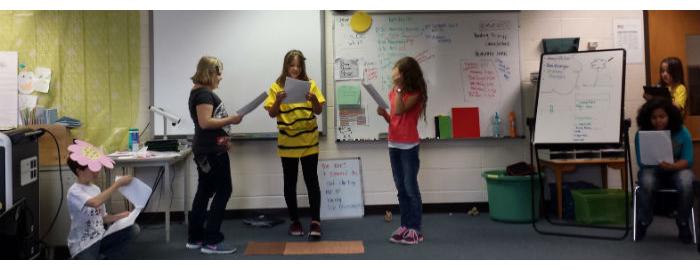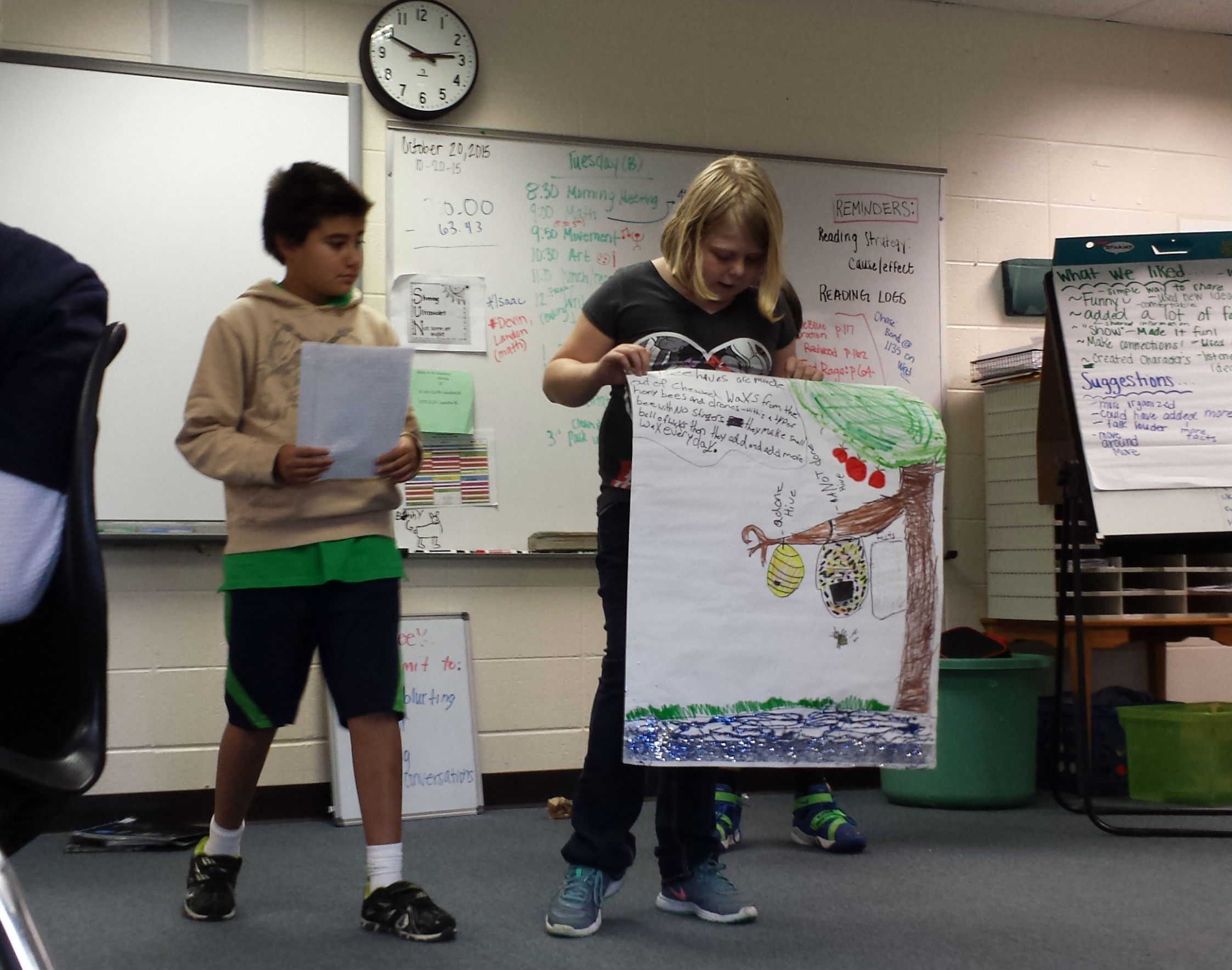
In the first trimester of the year, the fourth and fifth graders of ESAA studied ecosystems. What better way to study ecosystems than through the lens of bees and their contribution to a healthy environment. To begin, each class performed a “Generate and Sort” thinking routine that helped to grasp knowledge students already had about bees and captured all the questions students have about our buzzing friends. This research continues throughout the trimester, learning more about bees to better understand why they are important to our ecosystem, and culminating in a final project to help support bees and their important work.
To begin, students either alone or in partners, grabbed a pile of sticky notes and wrote down every single question they had about bees, one question per note. Questions can be be big and general like, “How are bees important?” to the specific, “Do bees have tongues?” All questions are good questions.

What questions do I have about bees?
At the end of the question-writing time, students pooled all of their sticky notes together. As you can imagine, this generated a lot of questions! Looking them over, students noticed that some people had the same questions. They also noticed that some of questions were on the same theme. For example, the previous question about the tongues of bees and one asking how bees eat might be grouped into the same category. At every step, students decided which questions belonged together, and when a new category needed to be created. Grey areas occur when a question may fit into two or more categories. Take the question, “How do bees make honey with their bodies?” Does this have to do with bee anatomy or honey? This situation came up several times in each class, and each time the students voted.

This process repeats until all of the questions are in a group with similar questions and a category name. Again, students decided what to call each group. Some examples are: Life of A Bee, Bee Temperament, Bees vs. Wasps, Hives, Bees and Humans, Parts of a Bee, and more. Students then decided which topics interested them the most and were given that topic to research. They also have a set of handy questions to focus their research. Each group used reference books, internet sources and experts to answer their questions.
Once their research was complete, each group designed a fun and informative way to present their research to the rest of the class. The Life of A Bee group created a board game in which the players are bees and roll the dice through various perils and events of a bee’s life. The Hives group in Mrs. Evenson’s class created a flashy informational poster, showing what a hive looks like and presented facts about them. The presentations all included a Ladder of Feedback from the rest of the class, providing an opportunity to ask clarifying questions and provide feedback about each presentation and how clearly they presented their research.
Later in the trimester, the three classes visited Maywood for a presentation on bees, see a living beehive and got to play some role-playing games, like the “waggle dance” to learn about bee communication. This inspired more research to come up with ways they can extend their recently gained knowledge to help out bees, which will in turn help out us humans and the environment in general. Each classroom was responsible for one aspect: Mr. Scharenbroch’s class designed blueprints for their own beehives, Mrs. Gauger’s class created plans for a pollinator garden, and Mrs. Evenson’s class worked on communicating how to help bees out to the community.


